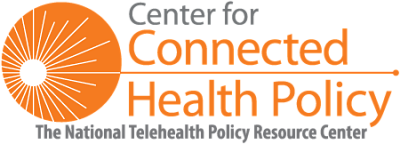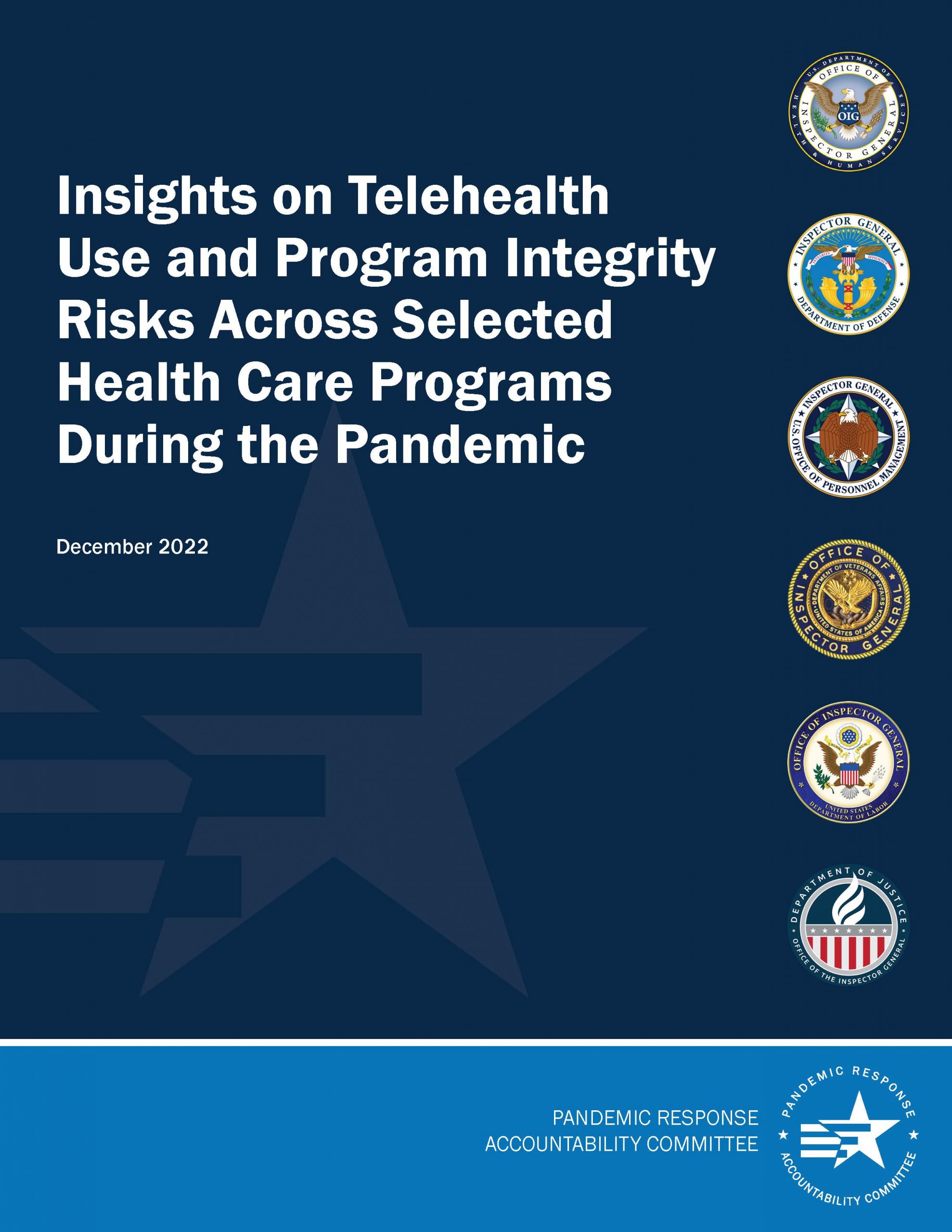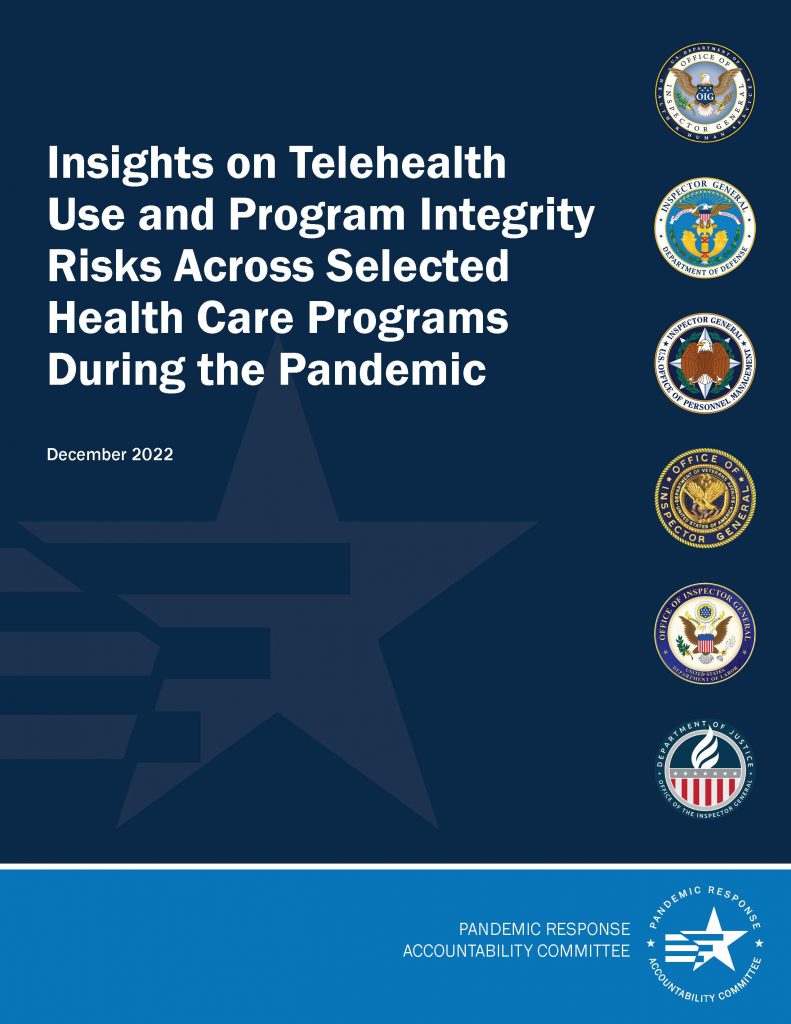The following summary is provided by the Center for Connected Health Policy

“A new report released last month by the Pandemic Response Accountability Committee (PRAC) focused on the use of telehealth in programs from six federal agencies. Titled Insights on Telehealth Use and Program Integrity Risks Across Selected Health Care Programs During the Pandemic, the PRAC’s Health Care Subgroup (Subgroup) focused on provision of telehealth services in the first year of the pandemic (March 2020 – February 2021) in the following six federal programs:
- Medicare
- TRICARE
- Federal Employees Health Benefits Program
- Veterans Health Administration
- Office of Workers’ Compensation Programs
- Federal Bureau of Prisons and US Marshals Services
Combined, these six programs covered telehealth services to 37 million individuals in the first year of COVID-19, compared to three million in the previous year. According to the report, compared to the year before the pandemic, each program saw increases of:
- Medicare – 83 times
- TRICARE – 71 times
- Workers’ Compensation – 32 times
- Federal Employee Health Benefits Program – 28 times
- Veterans Health Administration – 2 times
- Prison Health Care Services – 2 times
The Veterans Health Administration saw nearly 90% of its veterans use telehealth during this time. TRICARE, Medicare and Federal Employees Health Benefits Program enrollees used telehealth 49%, 43% and 40% respectively. Prison Health Care Services had the lowest use of telehealth with just 2% of the population using it.
The Subgroup “identified the expanded use of telehealth services as critical to the federal COVID-19 response efforts and to the efficiency and economy of those efforts.” However, while the importance of telehealth to the patients’ continued access to health care services was acknowledged, the Subgroup also noted that there were concerns regarding fraud, waste and abuse.
The Subgroup focused on four questions:
- To what extent did the selected programs in six federal agencies make telehealth service available to individuals during the pandemic?
- To what extent did individuals served by the selected programs use telehealth services during the first year of the pandemic?
- What types of program integrity risks are associated with the use of telehealth services?
- What types of data and safeguards could strengthen oversight?
For the most part, all six agencies took some steps to expand the use of telehealth, though some more than others. For example, Medicare had more temporary policies in place to expand access than the Federal Bureau of Prisons and US Marshals did. Overall, each agency overseeing the program took some level of action.
The report found that the six selected programs provided similar coverage for telehealth services. All of them covered a range of services and offered flexibility on patient location and the modality in which the service was delivered to the patient. Allowing audio-only was a common factor across the programs though some programs (TRICARE, Medicare and Workers’ Compensation) limited its availability to certain services. Allowing the home to be an originating site was also a common policy seen across the programs. Where differences were seen was around the handling of cost sharing and reimbursement amounts.
The report found that risks to program integrity included providers billing for the highest and most expensive level of service, duplicate claims and high-volume billing, inappropriate billing of services that could not be provided via telehealth, and questions around ordering durable medical equipment or lab tests. A report from the Office of the Inspector General for Health and Human Services (OIG) that was released several months before this report and focused on billing in Medicare looked at similar issues (and as noted, was one of the six programs studied here). However, the PRAC report notes that the findings were not proven cases of fraud, but were areas of concern and raised questions of program integrity risks that may indicate fraud, waste or abuse. Similarly, the OIG report found that less than 1% of Medicare telehealth claims actually raised flags for potential fraud.
The Subgroup also raised concerns regarding the limited information on telehealth impacts on quality and the lack of data necessary for oversight. The report acknowledged that the programs did have safeguards in place, but believed more could be done. Some suggestions the report had to strengthen oversight included:
- Conducting additional monitoring of telehealth services
- Develop additional billing controls
- Education of providers and individuals on telehealth services
- Collection of additional data related to telehealth
- Collect and review information about the impact of telehealth services on quality of care
The authors hope the report will provide policymakers, both on the state and federal level, with more information on telehealth and its uses to help inform future decision making. For more information, view the full report. ”






